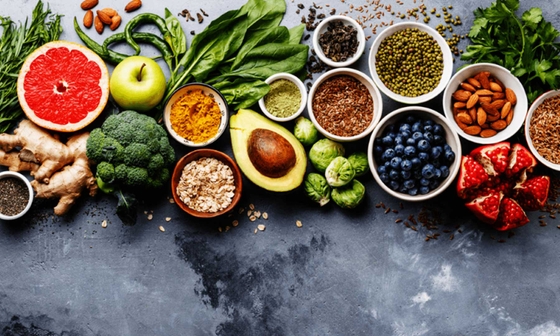
Nutrition and heart disease
Discover key information on heart-healthy eating and drinking for people living with heart disease.
Key takeaways
- Having a healthy diet is an important part of looking after your heart.
- The Heart Foundation has put together 5 easy tips for eating a heart-healthy diet.
- It’s helpful to read the food label to select the best choice.
- It’s important to limit your alcohol consumption.
When living with heart disease, it’s important to keep your heart healthy, to avoid further problems. Having a healthy diet is an important part of looking after your heart.
Having a heart healthy eating pattern has many benefits and will:
- Reduce your chances of having another heart attack
- Help reduce your cholesterol and blood pressure
- Help you feel healthier and have more energy
- Help you reach and stay at a healthy weight
- Reduce your chances of developing diabetes and help you control your diabetes.
Heart healthy eating
The Heart Foundation has put together 5 easy tips for eating a Heart Healthy Eating Pattern. For people living with heart disease, or risk factors including high blood pressure and high blood cholesterol, there are some additional recommendations highlighted below. Following these tips is important for people living with a heart condition.
A heart-healthy eating pattern includes:
- plenty of vegetables, fruit and wholegrains
- a variety of healthy protein-rich foods especially fish and seafood, legumes (such as beans and lentils), nuts and seeds. Eggs and poultry can also be enjoyed as part a heart-healthy eating pattern. If you eat red meat, choose lean cuts and limit to one to three times per week.
- For people living with heart disease, we also recommend:
- limit red meat intake to less than 350g per week
- avoid processed and deli meats
- Consume less than seven eggs per week
- unflavoured milk, yoghurt and cheese. People with high cholesterol or heart disease should choose reduced fat varieties.
- healthy fats and oils. Choose nuts, seeds, avocados, olives and their oils for cooking.
- herbs and spices to flavour foods, instead of adding salt.
In discussion with your doctor, the following are also recommended:
- Include 2-3 grams of plant sterols per day from fortified food products (special varieties of margarine, milk, yoghurt and breakfast cereals) to assist in lowering LDL cholesterol levels
- Speak with your doctor about including omega-3 supplements if you have high triglyceride levels (a type of fat in the blood) or heart failure
This way of eating is naturally low in unhealthy fats, salt and added sugar. It’s rich in wholegrains, fibre, antioxidants and healthy fats.
Understanding fats
Did you know that there are many different fats in the foods we eat? Some are healthier than others – in fact, some are important for your nutrition!
The Heart Foundation encourages you to replace foods rich in unhealthy fats (saturated and trans fat) with foods rich in healthy fats (unsaturated) in your diet.
Choose foods with high amounts of healthy fats such as avocados, olives, nuts and seeds, and use healthy oils for cooking, for example, olive, canola, sunflower, peanut and soybean oil. If you eat fish, try to include this 2-3 times per week to give your diet a boost of omega-3. Omega-3 fats are good for the heart, assisting in lowering the level of fats called trigly cerides in the blood and lowering the risk of irregular heart beats. Read more about healthy fats here.
To lower the amount of unhealthy fats in your diet, limit or avoid eating:
- Biscuits, pastries, cakes and muffins
- Processed meat, such as ham, bacon, sausages, hot dogs, tinned meat, corned meat, pies
- Takeaway foods, such as hamburgers, pizza, hot chips, potato chips, Asian foods, pasta, fried chicken
- Packaged foods and snack foods, such as chips
- Sauces (especially creamy ones).
These foods are usually high in added saturated and trans fats, along with added sugar and salt, and they aren’t part of a heart healthy eating pattern. Try to have these foods only sometimes and in small amounts.
What about salt?
We all want to eat tasty food. Salt is fine in small amounts, but eating too much salt can increase your blood pressure.
Aim to eat let than 5 g of salt per day – that’s less than 1 teaspoon. Since 75% of the salt we eat is in processed or packaged foods, even foods like bread and pasta, salt should be replaced with tasty spices and only added minimally. Read below for tips on reading labels to choose lower sodium packaged foods.
The Heart Foundation’s 5-step healthy heart eating pattern is naturally low in salt. Explore our recipes for ideas on how to prepare healthy meals, that help keep salt intake low.
Portion sizes
It’s also important to get the portions right when eating your meal.
Aim to fill half your plate with vegetables or salad, a quarter of your plate with protein foods (around the size of the palm of your hand) and a quarter of your plate with carbohydrate foods – ideally wholegrains (such as rice, pasta, potatoes, corn). Healthy fats can be included too.
Heart Foundation recipes support you to prepare heart healthy meals and portions. Explore Explore our full range of recipes for delicious, budget-friendly and easy to prepare heart healthy meals you can make at home.

Image explanation: A heart healthy eating plate made up of 1/2 vegetables, 1/4 carbohydrates and 1/4 protein, along with healthy oils and herbs & spices.
Reading food labels
It’s always healthiest to eat fresh foods. But it isn’t always possible in our busy lives. If you purchase pre-packaged foods, it’s helpful to read the food label to select the best choice. Read more here on how to use food labels to make a healthier choice.
What about alcohol?
Drinking too much alcohol can increase your risk of developing high blood pressure, high cholesterol, heart disease, stroke and other health problems.
We’re here to help: healthy eating tools and resources
We have plenty of resources to help you follow a heart-healthy eating pattern.
- Check to see if your current eating pattern aligns with our healthy eating recommendations by using our nutrition action plan.
- Explore our full range of recipes for delicious, budget-friendly and easy to prepare heart-healthy meals you can make at home.
- Discover our collection of free recipe e-books, from ‘Family recipes on a budget’ to '5 Ingredient Recipes' plus many more.
Get four weeks of easy-to-follow dinner recipes, shopping lists, tips and other helpful information to make healthy eating easy with our free Heart Healthy Dinner Plan
You might also be interested in...

Healthy eating to protect your heart
Poor diet is one of the leading risk factors for heart disease in Australia.

Long-term recovery after a heart attack
Information to help you adjust to what could be the 'new normal'

How to make healthier meals at home
Cooking at home is often healthier than eating out.
Last updated19 March 2024